As we continue our series on headlight bulb upgrades, it’s time to discuss electrical interference. Just as in the previous article on spectral content, this is an issue that very few retailers or manufacturers check for or discuss. While these considerations don’t affect the performance of your lighting system, they can significantly affect the performance of your vehicle’s audio system. They could also potentially affect tire pressure monitoring or keyless entry systems. Let’s dive in!
What Is Electrical Interference?
Let’s talk about what causes electrical interference. At the most fundamental level, any time current flows through a conductor, an electrical field is created around that conductor. We typically discuss direct current (DC) when talking about the battery and alternator in vehicle electrical systems. The fixed electrical field around conductors isn’t a huge issue for DC flow unless the alternator has a regulator problem and is adding alternating current (AC) ripples. Even then, it’s the AC that could pose a problem.
We can get into noise trouble with DC when it powers a device with a switching power supply. Large car audio amplifiers, HID light ballasts and LED light bars are devices with switching power supplies that can cause interference issues. Some LED bulbs also have switching power supplies.

Inside a switching power supply, the DC power from the vehicle’s electrical systems is pulsed on and off very quickly. These pulses enter a transformer that steps the voltage up or down. Amplifiers typically use step-up transformers to produce higher voltages to deliver more power to speakers. Items like LED lighting systems use step-down transformers or buck regulators to decrease voltage.
When the current from the battery pulses on and off, that can create a significant source of electrical interference. If you’ve ever adjusted the dimmer in a home and heard the light bulb ring, that’s the presence of unwanted harmonics caused by switching the AC supply on and off midway through the waveform.
You will find that high-quality amplifiers, in particular, have filtering networks on the power feed into the amp. These networks help smooth any noise that might come from the alternator. Still, they primarily prevent switching noise from inside the amplifier from being fed back onto the power wire to radiate through the vehicle.
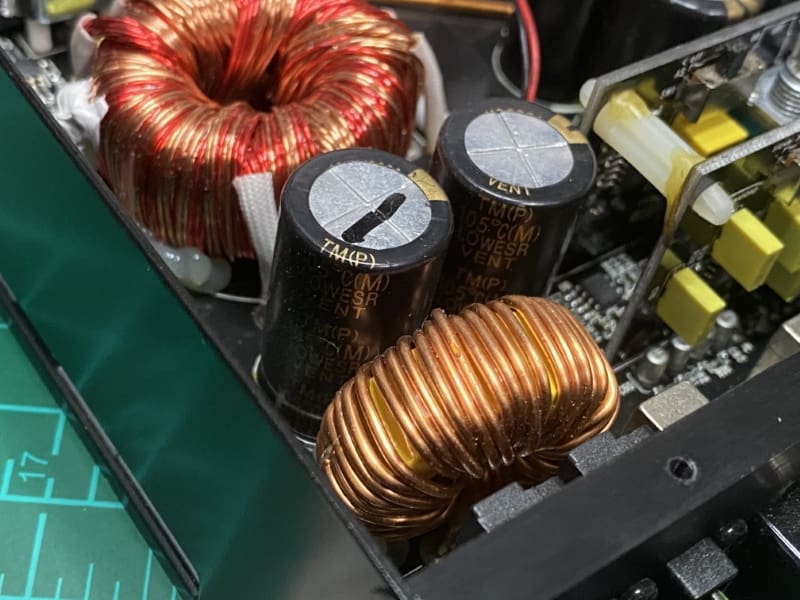
What Problems Does Electrical Interference Cause?
In lighting systems, the most common problem in poorly designed lights is the effect on AM and FM radio reception. The noise produced typically occurs in the same range of frequencies as AM (780 to 1610 kHz) and FM (88 to 108 MHz). This unwanted interference can drown out weak radio station signals or add noise to some stations.
Other wireless communication systems like keyless entry and tire pressure monitoring can be affected by sources of electrical noise. Most keyless entry systems operate on 315 and 433 MHz frequencies. Tire pressure monitoring systems use these same frequencies.
If you think a recent lighting or accessory upgrade is affecting radio reception, there’s an easy way to test to see if your hypothesis is correct. Turn on the radio and tune to whatever station you think is affected. Then, turn off the device you think is causing the interference. If it’s a lighting product, turn off the lights. Pull the fuse out of the amp if you think there’s something else, like a subwoofer amplifier, that might be causing problems. This testing process gets tricky if all the sound from your audio system is produced by the amp you think is causing the problem. In that case, seek professional assistance.
Dealing with Electrically Noisy Lighting Upgrades
If you’re in a situation where you have a noisy lighting upgrade, return it and have the shop install a higher-quality product.
If you’re determined to have the shop fight with what you’ve purchased, two solutions typically work to reduce noise feeding back into the vehicle’s electrical system. The first and most straightforward solution is to add an inline filter. These filters include capacitors and inductors that help smooth out the noise from the switching power supply in the lights.
If the installer reads the instructions for most HID and LED upgrades, they’ll note that most reputable companies recommend installing new light wiring. Companies like Lumens HPL offer harnesses with the correct connectors or plugs to integrate directly with the factory wiring. These harnesses include relays, fuse holders and everything needed to power the new lights directly from the battery.
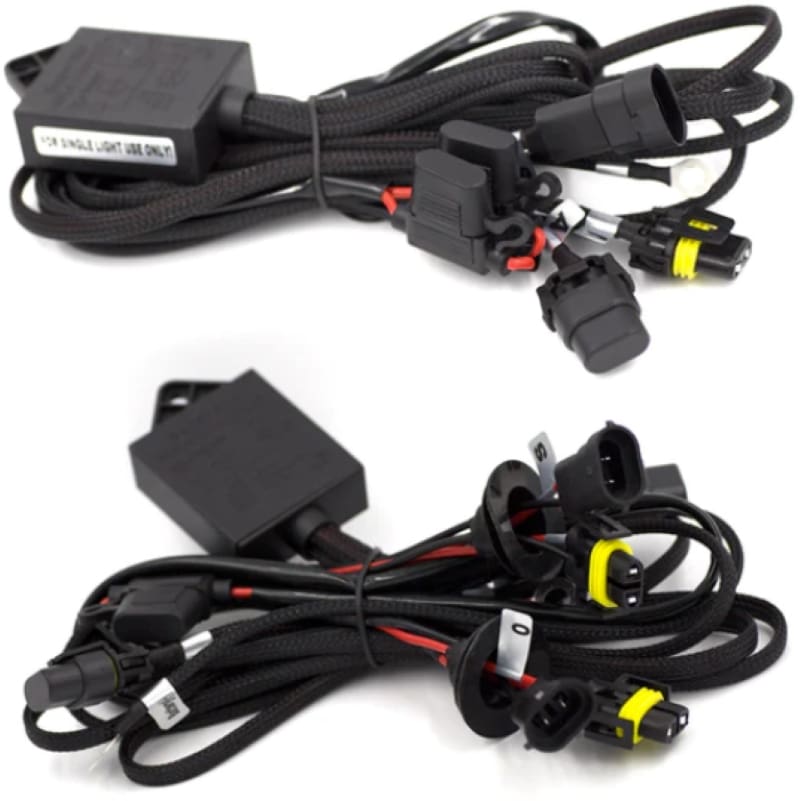
There are two benefits to using a dedicated power harness. First and foremost, power for whatever lights you’ve chosen comes directly from the battery and alternator. These power sources bypass any daytime running light or sensing circuitry, so you know the system will get all the voltage possible from the vehicle. Second, if the bulbs you’ve chosen are from a no-name brand that does cause electrical interference on the wiring, the battery acts like a giant filter. The wiring that might have noise on it remains up in the front of the vehicle. If your installer used the factory wiring, that noise might feed back to a body control module in the vehicle interior.
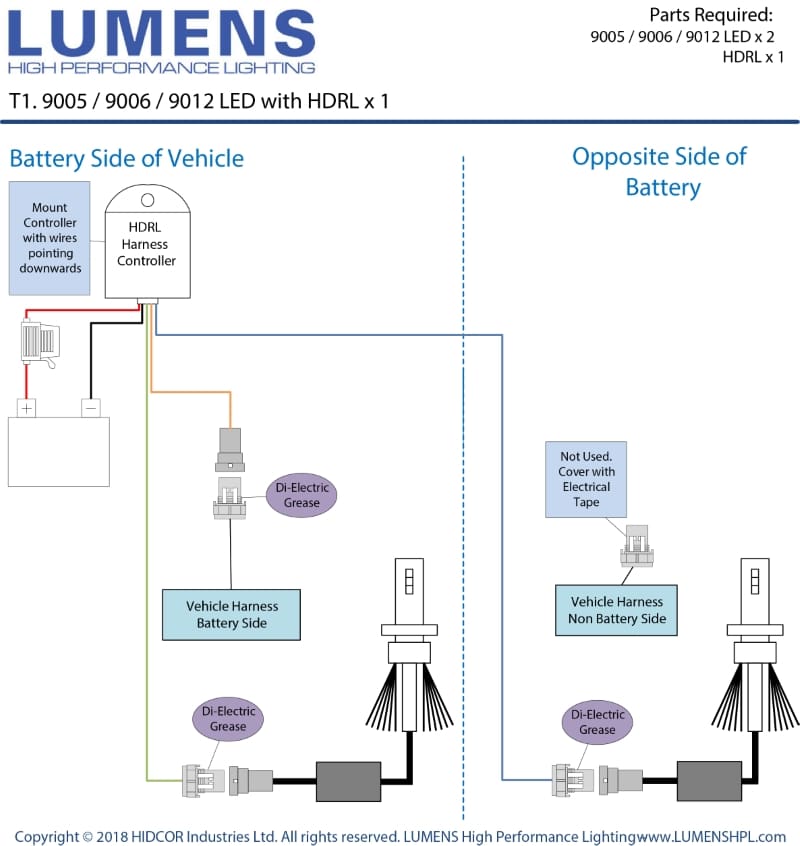
Measuring Electrical Interference
We have a device in the BestCarAudio.com lab called an RTL-SDR. In short, it’s a USB-stick radio receiver. We can tune into radio frequencies and decode AM or FM audio signals using dedicated software. We can also monitor ham or GRMS radio. This device is a receiver-only solution – we can’t broadcast.
We set the antenna up about a meter from an old HID ballast and took some measurements. We don’t have any low-quality light upgrades around the shop, but at least we could see “something” from our testing.
The image below is a spectrographic capture of 10 seconds of RF energy between 90.4 and 92.9 MHz. These frequencies would be down near the bottom of the FM radio band. Brighter colors in the spectrograph show more power. The red and yellow information on the left is the audio from 91.1 FM. The light blue in the middle is 91.7, and the yellow is 92.1. You can see the clearly defined bands on either side of the 92.1 MHz audio information. Those digital side-bands can carry information like HD Radio or RDS-TMC traffic information.
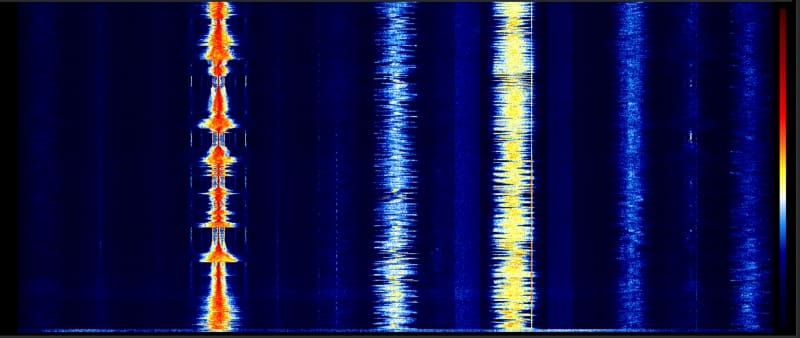
We moved the antenna to an area of the lab where radio reception is much worse to establish a baseline for our test. That image is below.
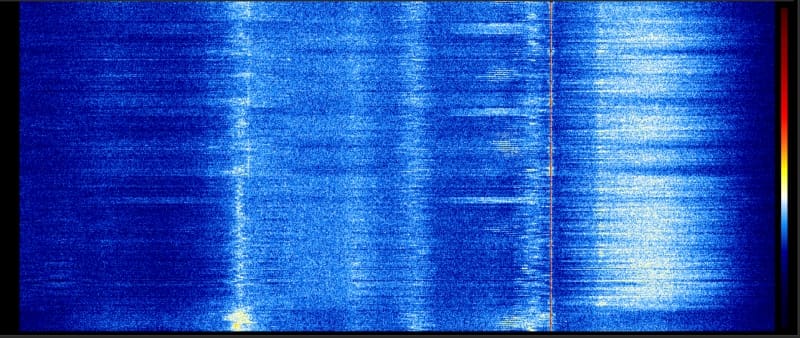
Next, we turned on that HID light and repeated the measurement.
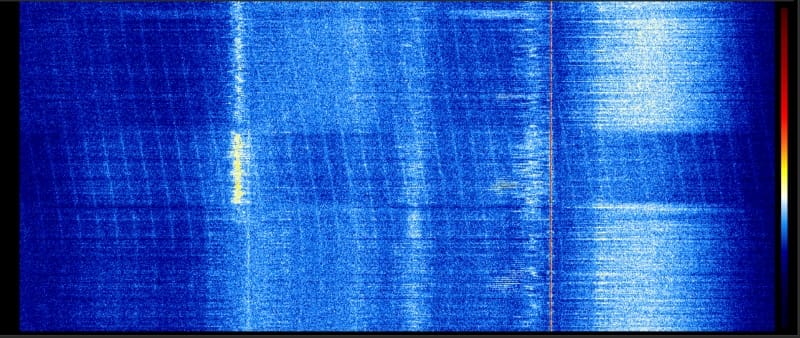
Though it’s not terrible, several dozen bands of sweeping energy have now polluted the measurement. These signals wouldn’t likely be strong enough to prevent you from picking up a radio station. Still, it would reduce audio signal clarity when reception is affected by buildings or environmental conditions.
Buy Quality Products and Avoid Headaches
When the price of a product seems too good to be true, it often is. Sometimes, it’s not the specific performance of a light or amplifier; they might do what they claim. However, other factors like electrical interference or heat may cause problems. If you stick with brand-name solutions, you’re unlikely to run into problems. Drop by a local specialty mobile enhancement retailer to learn about the high-quality lighting upgrades available to help you see safely when the sun sets.
Lead-In Image: Credit to @zirconicusso for the radio image used in the Lead-In.
This article is written and produced by the team at www.BestCarAudio.com. Reproduction or use of any kind is prohibited without the express written permission of 1sixty8 media.
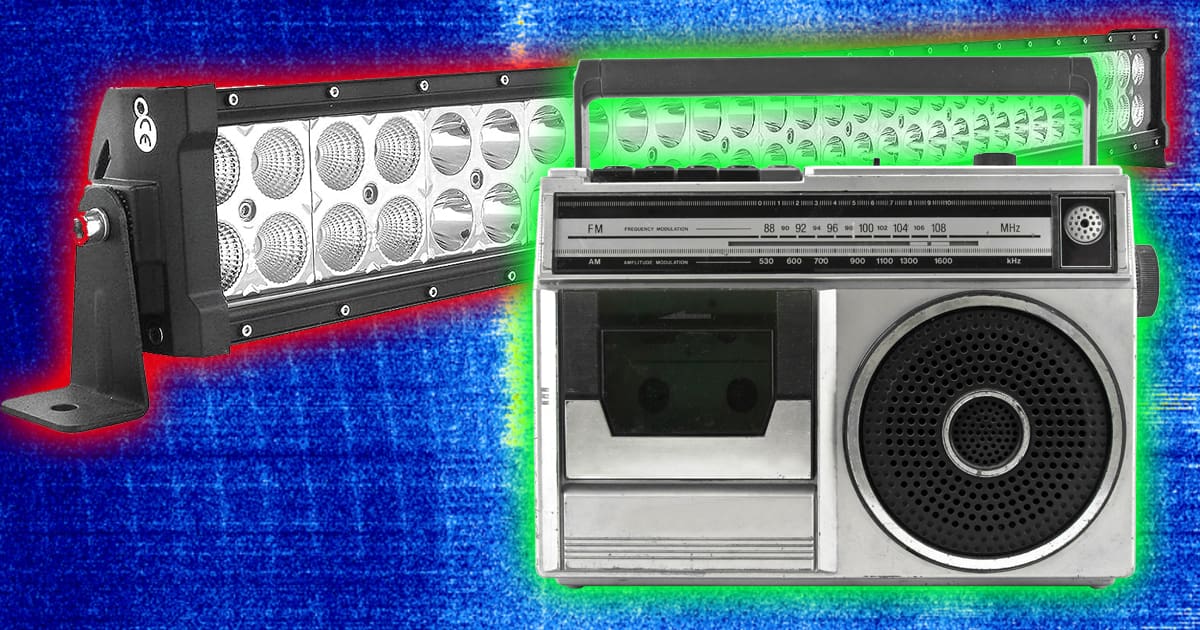
Leave a Reply